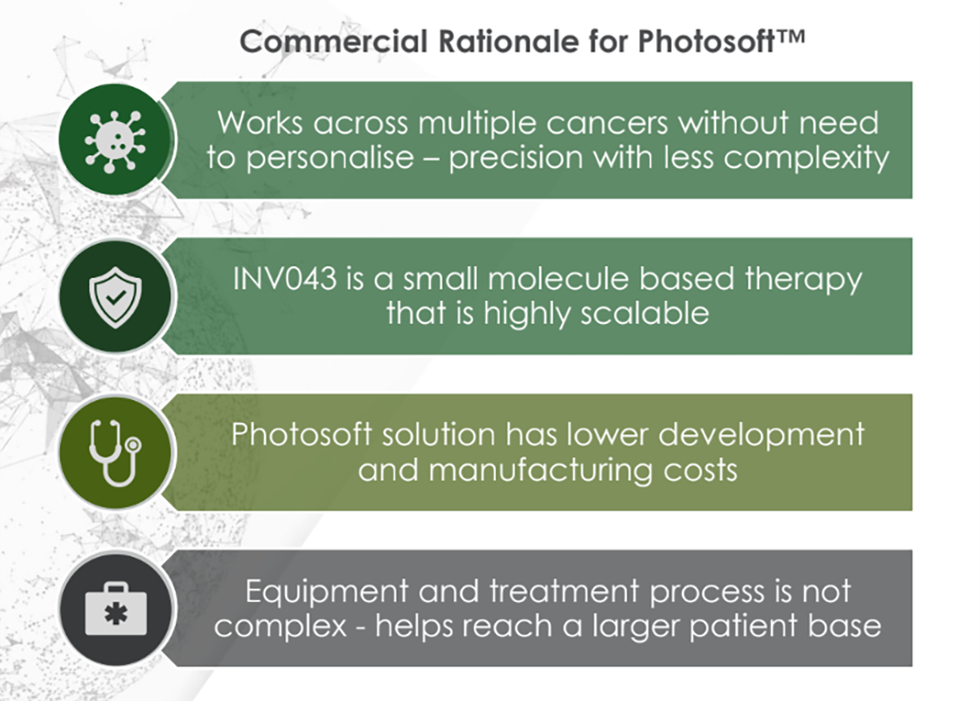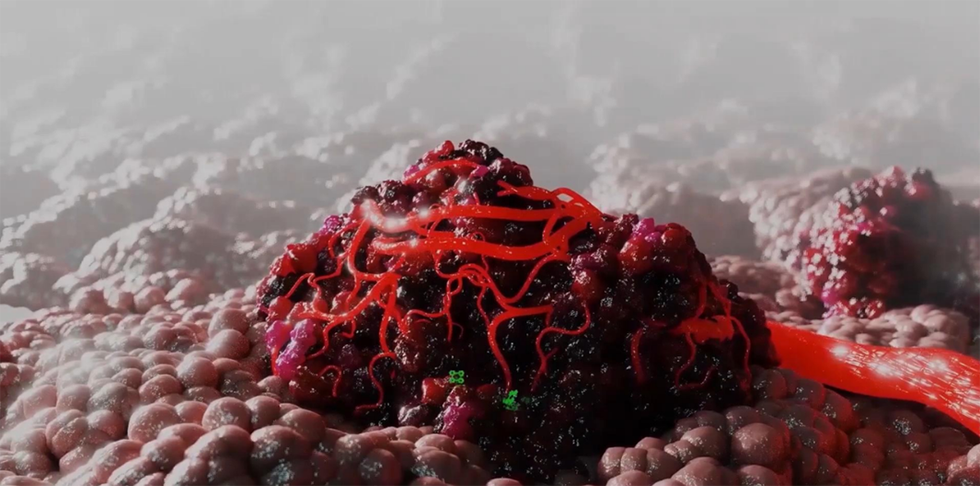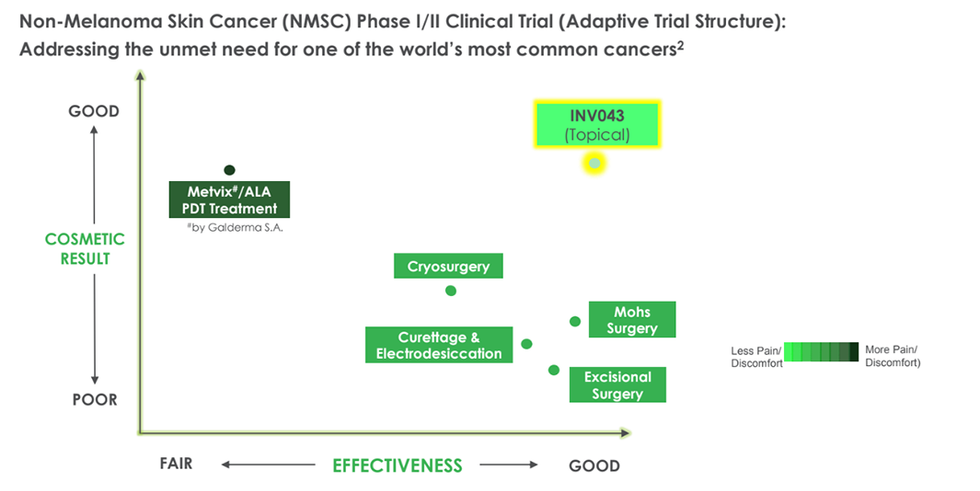- Secondary endpoint data for estimated glomerular filtration rate (eGFR) showed numerical improvement over 6 months vs. placebo 1 ; additional 6-month open-label data to be presented at a future medical meeting 2,3
- Fabhalta showed a favorable safety profile with no new safety signals 1
- C3G, an ultra-rare kidney disease caused by alternative complement pathway overactivation, progresses to kidney failure in ∼50% of patients within 10 years 4-7 ; currently there are no treatments approved for C3G 7-9
- Fabhalta, an oral Factor B inhibitor of the alternative complement pathway, selectively targets the underlying cause of C3G 1 ; late-stage development program ongoing across several other rare diseases 10-13
Novartis today presented results from the 6-month, double-blind period of the Phase III APPEAR-C3G study of Fabhalta ® (iptacopan) at the late-breaking clinical trials session of the European Renal Association (ERA) Congress 1 . Patients treated with Fabhalta in addition to supportive care achieved a 35.1% (p=0.0014) reduction in proteinuria (as measured by 24-hour urine protein to creatinine ratio [UPCR]) at 6 months when compared to placebo on top of supportive care 1 . In many kidney diseases, proteinuria reduction is an increasingly recognized surrogate marker correlating with delaying progression to kidney failure 14,15 .
Fabhalta is an oral Factor B inhibitor of the alternative complement pathway being investigated in adult patients with C3 glomerulopathy (C3G) 1-3 . Regulatory submissions, including to the FDA and EMA, for the adult C3G indication are planned for the second half of 2024.
"C3G is an overlooked and devastating illness that often strikes when people are young. The prognosis for patients with C3G is poor, and around half of the affected patients progress to kidney failure requiring dialysis or transplant within 10 years of being diagnosed," said Marianne Silkjær Nielsen, Founder of CompCure, a Danish non-profit association committed to improving outcomes for individuals with C3G and immune complex membranoproliferative glomerulonephritis (IC-MPGN). "Currently there are no therapies approved for C3G, but research into potential new treatments developed specifically for this disease gives us hope that we can improve outcomes for patients and blunt its emotional, physical and social effects."
Additional data on the secondary endpoint of estimated glomerular filtration rate (eGFR), a measure of kidney function, showed a numerical improvement of +2.2 mL/min/ 1.73 m 2 (p=0.1945) over 6 months with Fabhalta compared to placebo 1 . The study also showed Fabhalta has a favorable safety profile with no new safety signals 1 .
"This is an exciting milestone for patients and the potential future management of C3G. The hallmark of C3G is overactivation of part of the immune system called the alternative complement pathway, which damages the kidneys and leads to severe loss of kidney function in many patients. Currently used treatments don't address the underlying biology of C3G and often come with significant side effects that add to the burden of the illness," said Professor David Kavanagh , Professor of Complement Therapeutics & Honorary Consultant Nephrologist at the Faculty of Medical Sciences at Newcastle University and APPEAR-C3G Steering Committee Member. "Fabhalta is the first potential treatment that targets the alternative complement pathway in C3G, and its impact on measures of kidney damage and kidney function in this study, in addition to its safety profile, is encouraging for patients and the clinical community."
The APPEAR-C3G study continues with an additional 6-month, open-label period following the 6-month double-blind period, in which all patients receive Fabhalta, including those previously receiving placebo 2,3 . These data will be presented at an upcoming medical meeting when available.
At ERA, Novartis is also presenting new data across its rare disease portfolio, including results for investigational atrasentan in IgA nephropathy (IgAN) from the 36-week interim analysis of the Phase III ALIGN study, additional data for Fabhalta in IgAN from the 9-month interim analysis of the Phase III APPLAUSE-IgAN study, long-term 33-month efficacy and safety data for Fabhalta in C3G from the Phase II extension study, 1-year Phase I/II data for investigational zigakibart in IgAN, and data from real-world studies in C3G and atypical hemolytic uremic syndrome (aHUS) 16-19 .
"Our ambition is to transform the care of patients living with rare kidney diseases by discovering, developing and delivering innovative treatment options," said David Soergel , M.D., Global Head, Cardiovascular, Renal and Metabolism Development Unit, Novartis. "The APPEAR-C3G results add to the growing body of evidence demonstrating Fabhalta's potential to target the underlying pathophysiological drivers and to provide clinically meaningful outcomes in a range of rare conditions."
About APPEAR-C3G
APPEAR-C3G (NCT04817618) is a Phase III multicenter, randomized, double-blind, parallel group, placebo-controlled study to evaluate the efficacy and safety of twice-daily oral Fabhalta (200 mg) in C3G patients 2,3 . In addition to the results from adult patients with C3G, enrollment is ongoing in a separate cohort of adolescent patients with C3G 2,3 . The study comprises a 6-month double-blind period where adult patients were randomized 1:1 to receive Fabhalta or placebo on top of supportive care, followed by a 6-month open-label period where all patients receive Fabhalta (including those who were previously on placebo) 2,3 .
The primary endpoint for the double-blind period was proteinuria reduction from baseline at 6 months for Fabhalta compared to placebo as measured by 24-hour UPCR 2,3 . The primary endpoint for the open-label period is proteinuria reduction from baseline at 12 months for both treatment arms and proteinuria reduction from 6 to 12 months for the placebo arm 2,3 . Secondary endpoints for the double-blind period include change in eGFR, proportion of participants meeting composite renal endpoint criteria (≤15% reduction in eGFR and ≥50% reduction in UPCR), change in glomerular inflammation (as measured by disease total activity score in renal biopsy), change in patient reported fatigue (as measured by FACIT-Fatigue score), and safety and tolerability 2,3 .
About Fabhalta ® (iptacopan)
Fabhalta (iptacopan) is an oral, Factor B inhibitor of the alternative complement pathway 1 .
Discovered at Novartis, Fabhalta is currently in development for a range of rare diseases including IgAN, C3G, aHUS, IC-MPGN and lupus nephritis (LN), and, as such, the safety and efficacy profile have not been established in these indications 2,11-13,20 . There is no guarantee that Fabhalta will become commercially available for these indications.
Fabhalta was approved by the FDA in December 2023 and the EMA in May 2024 for the treatment of adults with the rare blood disorder paroxysmal nocturnal hemoglobinuria (PNH) 21,22 .
About C3 glomerulopathy (C3G)
C3G is an ultra-rare, progressive kidney disease that initially presents in mostly children and young adults 4-6,23 . Each year, approximately 1-2 people per million worldwide are newly diagnosed with C3G, a form of membranoproliferative glomerulonephritis (MPGN) 4 .
In C3G, overactivation of the alternative complement pathway – part of the immune system – causes deposits of C3 protein to build up in kidney glomeruli (a network of blood vessels that filter waste and remove extra fluids from the blood) 4,7,23-25 . This triggers inflammation and glomerular damage that results in proteinuria (protein in urine), hematuria (blood in urine) and reduced kidney function 4,7,23-25 . Approximately 50% of C3G patients progress to kidney failure within 10 years of diagnosis, at which point they will require dialysis and/or kidney transplantation 6,7 , with over 55% of patients with C3G experiencing disease recurrence post-transplant 26-29 .
Novartis commitment in rare kidney diseases
At Novartis, our journey in nephrology began more than 40 years ago when the development and introduction of cyclosporine helped reimagine the field of transplantation and immunosuppression. We continue today with the same bold ambition to transform the lives of people living with kidney diseases.
Through our portfolio, we are exploring potential therapeutic options to address the current unmet needs of people living with rare diseases, including IgAN, C3G, aHUS, IC-MPGN and LN. Innovative treatment options that target the underlying causes of these diseases may preserve kidney function and help people live longer without the need for dialysis or transplantation.
Disclaimer
This press release contains forward-looking statements within the meaning of the United States Private Securities Litigation Reform Act of 1995. Forward-looking statements can generally be identified by words such as "potential," "can," "will," "plan," "may," "could," "would," "expect," "anticipate," "look forward," "believe," "committed," "investigational," "pipeline," "launch," or similar terms, or by express or implied discussions regarding potential marketing approvals, new indications or labeling for the investigational or approved products described in this press release, or regarding potential future revenues from such products. You should not place undue reliance on these statements. Such forward-looking statements are based on our current beliefs and expectations regarding future events, and are subject to significant known and unknown risks and uncertainties. Should one or more of these risks or uncertainties materialize, or should underlying assumptions prove incorrect, actual results may vary materially from those set forth in the forward-looking statements. There can be no guarantee that the investigational or approved products described in this press release will be submitted or approved for sale or for any additional indications or labeling in any market, or at any particular time. Nor can there be any guarantee that such products will be commercially successful in the future. In particular, our expectations regarding such products could be affected by, among other things, the uncertainties inherent in research and development, including clinical trial results and additional analysis of existing clinical data; regulatory actions or delays or government regulation generally; global trends toward health care cost containment, including government, payor and general public pricing and reimbursement pressures and requirements for increased pricing transparency; our ability to obtain or maintain proprietary intellectual property protection; the particular prescribing preferences of physicians and patients; general political, economic and business conditions, including the effects of and efforts to mitigate pandemic diseases; safety, quality, data integrity or manufacturing issues; potential or actual data security and data privacy breaches, or disruptions of our information technology systems, and other risks and factors referred to in Novartis AG's current Form 20-F on file with the US Securities and Exchange Commission. Novartis is providing the information in this press release as of this date and does not undertake any obligation to update any forward-looking statements contained in this press release as a result of new information, future events or otherwise.
About Novartis
Novartis is an innovative medicines company. Every day, we work to reimagine medicine to improve and extend people's lives so that patients, healthcare professionals and societies are empowered in the face of serious disease. Our medicines reach more than 250 million people worldwide.
Reimagine medicine with us: Visit us at https://www.novartis.com and https://www.novartis.us and connect with us on LinkedIn , LinkedIn US , Facebook , X/Twitter , X/Twitter US and Instagram .
References
- Kavanagh D, Bomback A, Vivarelli M, et al. Efficacy and Safety of Iptacopan in Patients with C3 Glomerulopathy: Results from the Phase 3 APPEAR-C3G Trial. Presented at European Renal Association (ERA) Congress; May 25, 2024 ; Stockholm, Sweden .
- ClinicalTrials.gov. NCT04817618. A Multicenter, Randomized, Double-Blind, Parallel Group, Placebo-Controlled Study to Evaluate the Efficacy and Safety of Iptacopan (LNP023) in Complement 3 Glomerulopathy (APPEAR-C3G). Available from: https://clinicaltrials.gov/study/NCT04817618 . Accessed May 2024 .
- Bomback AS, Kavanagh D, Vivarelli M, et al. Alternative Complement Pathway Inhibition with Iptacopan for the Treatment of C3 Glomerulopathy – Study Design of the APPEAR-C3G Trial. Kidney Int Rep . 2022;7(10):2150-2159. doi:10.1016/j.ekir.2022.07.004
- Schena FP, Esposito P, Rossini M. A Narrative Review on C3 Glomerulopathy: A Rare Renal Disease. Int J Mol Sci. 2020;21(2):525. doi:10.3390/ijms21020525
- Smith RJ, Alexander J, Barlow PN, et al. New Approaches to the Treatment of Dense Deposit Disease. J Am Soc Nephrol. 2007;18(9):2447-2456. doi:10.1681/ASN.2007030356
- Martin B, Smith RJH. In: Adam MP, Feldman J, Mirzaa GM, et al., editors. C3 Glomerulopathy. GeneReviews ® [Internet]. Updated 2018. University of Washington, Seattle ; 1993-2024. Available from: https://www.ncbi.nlm.nih.gov/books/NBK1425/ . Accessed May 2024 .
- Smith RJH, Appel GB, Blom AM, et al. C3 Glomerulopathy – Understanding a Rare Complement-Driven Renal Disease. Nat Rev Nephrol . 2019;15(3):129-143. doi:10.1038/s41581-018-0107-2
- Goodship TH, Cook HT, Fakhouri F, et al. Atypical Hemolytic Uremic Syndrome and C3 Glomerulopathy: Conclusions from a "Kidney Disease: Improving Global Outcomes" (KDIGO) Controversies Conference. Kidney Int . 2017;91(3):539-551. doi:10.1016/j.kint.2016.10.005
- Kidney Disease: Improving Global Outcomes (KDIGO) Glomerular Diseases Work Group. KDIGO 2021 Clinical Practice Guideline for the Management of Glomerular Diseases. Kidney Int . 2021;100(4S):S1-S276. doi:10.1016/j.kint.2021.05.021
- Perkovic V, Kollins D, Renfurm R, et al. WCN24-1506 Efficacy and Safety of Iptacopan in Patients with IgA Nephropathy: Interim Results from the Phase 3 APPLAUSE-IgAN Study. Kidney Int Rep . 2024;9(4):S506. doi:10.1016/j.ekir.2024.02.1414
- ClinicalTrials.gov. NCT04578834. A Multi-Center, Randomized, Double-Blind, Placebo-Controlled, Parallel Group, Phase III Study to Evaluate the Efficacy and Safety of LNP023 in Primary IgA Nephropathy Patients (APPLAUSE-IgAN). Available from: https://clinicaltrials.gov/study/NCT04578834 . Accessed May 2024 .
- ClinicalTrials.gov. NCT04889430. A Multicenter, Single-Arm, Open Label Trial to Evaluate Efficacy and Safety of Oral, Twice Daily LNP023 in Adult aHUS Patients Who Are Naive to Complement Inhibitor Therapy (APPELHUS). Available from: https://clinicaltrials.gov/study/NCT04889430 . Accessed May 2024 .
- ClinicalTrials.gov. NCT05755386. A Multicenter, Randomized, Double-Blind, Parallel Group, Placebo-Controlled Study to Evaluate the Efficacy and Safety of Iptacopan (LNP023) in Idiopathic Immune Complex Mediated Membranoproliferative Glomerulonephritis (IC-MPGN) (APPARENT). Available from: https://clinicaltrials.gov/study/NCT05755386 . Accessed May 2024 .
- Thompson A, Carroll K, Inker LA, et al. Proteinuria Reduction as a Surrogate End Point in Trials of IgA Nephropathy. Clin J Am Soc Nephrol . 2019;14(3):469-481. doi:10.2215/CJN.08600718
- Caravaca-Fontán F, Díaz-Encarnación M, Cabello V, et al. Longitudinal Change in Proteinuria and Kidney Outcomes in C3 Glomerulopathy. Nephrol Dial Transplant . 2022;37(7):1270-1280. doi:10.1093/ndt/gfab075
- Heerspink HJL, Jardine M, Kohan D, et al. ALIGN Phase 3 Primary Endpoint Analysis: Atrasentan Shows Significant Reduction in Proteinuria in Patients with IgA Nephropathy. Presented at European Renal Association (ERA) Congress; May 25, 2024 ; Stockholm, Sweden .
- Perkovic V, Kollins D, Papachristofi O, et al. Efficacy and Safety of Iptacopan in Patients with Primary IgA Nephropathy: Interim Analysis Results of the Phase 3 APPLAUSE-IgAN Study. Presented at European Renal Association (ERA) Congress; May 25, 2024 ; Stockholm, Sweden .
- Nester CM, Eisenberger U, Karras A, et al. Update to the Long-Term Safety and Efficacy of Iptacopan in C3G: 33-Month Extension Study Data from Patients Enrolled in a Phase 2 Study. Presented at European Renal Association (ERA) Congress; May 25, 2024 ; Stockholm, Sweden .
- Barratt J, Kooienga L, Agha I, et al. One Year of Zigakibart Treatment Shows Clinically Meaningful Proteinuria Reduction and Good Tolerability in a Phase 1/2 Study of IgA Nephropathy. Presented at European Renal Association (ERA) Congress; May 25, 2024 ; Stockholm, Sweden .
- ClinicalTrials.gov. NCT05268289. An Adaptive, Randomized, Double-Blind, Dose Exploration, Parallel Group, Placebo Controlled, Multicenter Phase 2 Trial to Evaluate the Efficacy, Safety and Tolerability of LNP023 in Combination with Standard-of-Care with and without Oral Corticosteroids in Patients with Active Lupus Nephritis Class III-IV, +/- V. Available from: https://clinicaltrials.gov/study/NCT05268289 . Accessed May 2024 .
- Novartis. Novartis receives FDA approval for Fabhalta® (iptacopan), offering superior hemoglobin improvement in the absence of transfusions as the first oral monotherapy for adults with PNH. Available from: https://www.novartis.com/news/media-releases/novartis-receives-fda-approval-fabhalta-iptacopan-offering-superior-hemoglobin-improvement-absence-transfusions-first-oral-monotherapy-adults-pnh . Accessed May 2024 .
- Novartis. Data on File.
- Medjeral-Thomas NR, O'Shaughnessy MM, O'Regan JA, et al. C3 Glomerulopathy: Clinicopathologic Features and Predictors of Outcome. Clin J Am Soc Nephrol . 2014;9(1):46-53. doi:10.2215/CJN.04700513
- Ravindran A, Fervenza FC, Smith RJH, Sethi S. C3 Glomerulopathy Associated with Monoclonal Ig is a Distinct Subtype. Kidney Int . 2018;94(1):178-186. doi:10.1016/j.kint.2018.01.037
- Caravaca-Fontán F, Lucientes L, Cavero T, Praga M. Update on C3 Glomerulopathy: A Complement-Mediated Disease. Nephron . 2020;144(6):272-280. doi:10.1159/000507254
- Servais A, Noël LH, Roumenina LT, et al. Acquired and Genetic Complement Abnormalities Play a Critical Role in Dense Deposit Disease and Other C3 Glomerulopathies. Kidney Int . 2012;82(4):454-464. doi:10.1038/ki.2012.63
- Zand L, Lorenz EC, Cosio FG, et al. Clinical Findings, Pathology, and Outcomes of C3GN after Kidney Transplantation. J Am Soc Nephrol . 2014;25(5):1110-1117. doi:10.1681/ASN.2013070715
- Regunathan-Shenk R, Avasare RS, Ahn W, et al. Kidney Transplantation in C3 Glomerulopathy: A Case Series. Am J Kidney Dis . 2019;73(3):316-323. doi:10.1053/j.ajkd.2018.09.002
- Caravaca-Fontán F, Polanco N, Villacorta B, et al. Recurrence of Immune Complex and Complement-Mediated Membranoproliferative Glomerulonephritis in Kidney Transplantation. Nephrol Dial Transplant . 2023;38(1):222-235. doi:10.1093/ndt/gfac148
Novartis Media Relations
E-mail: media.relations@novartis.com
| North America | |
| Michael Meo | +1 862 274 5414 |
| Marlena Abdinoor | +1 617 335 9525 |
Novartis Investor Relations
E-mail: investor.relations@novartis.com
| North America | |
| Sloan Simpson | +1 862 345 4440 |
| Jonathan Graham | +1 201 602 9921 |
| Parag Mahanti | +1 973 876 4912 |
SOURCE Novartis Pharmaceuticals Corporation


 Figure 1 - Location Map, Lake Owen Project, Wyoming, USA
Figure 1 - Location Map, Lake Owen Project, Wyoming, USA Figure 2 - Claim Map, Lake Owen Project
Figure 2 - Claim Map, Lake Owen Project Figure 3 - Drill Hole Locations
Figure 3 - Drill Hole Locations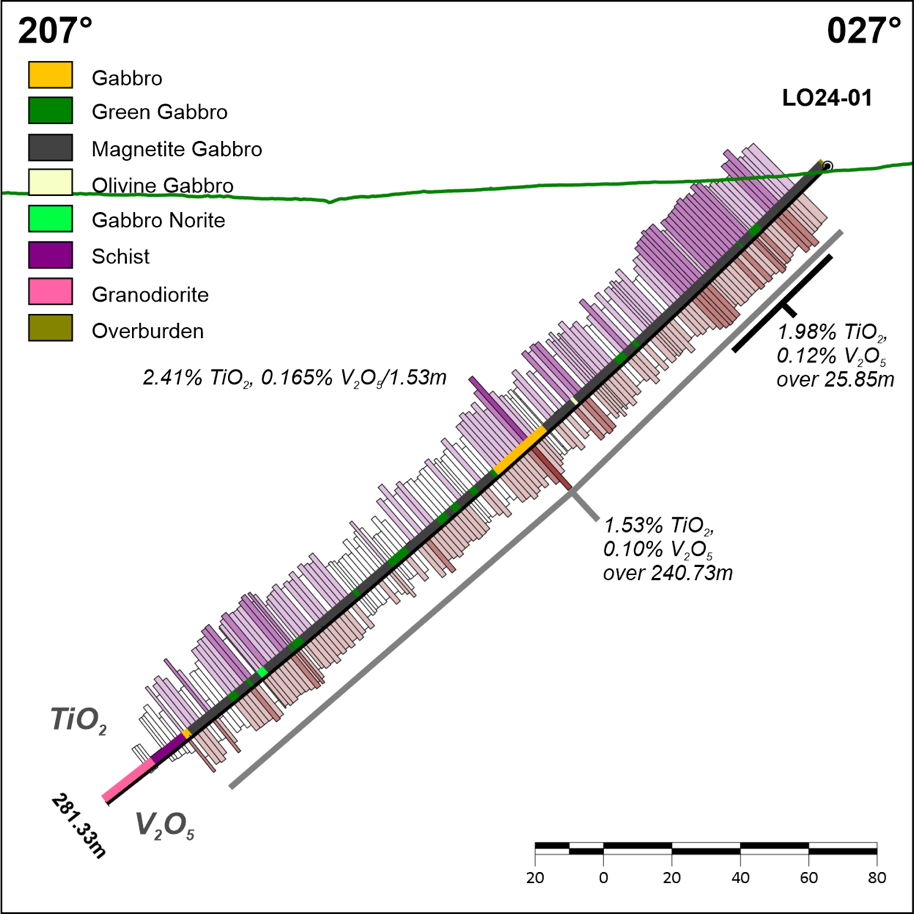 Figure 4 - DDH Cross Section, LO24-01
Figure 4 - DDH Cross Section, LO24-01 Figure 5 - Surface Rock Sampling - Titanium Values (part of the Project)
Figure 5 - Surface Rock Sampling - Titanium Values (part of the Project)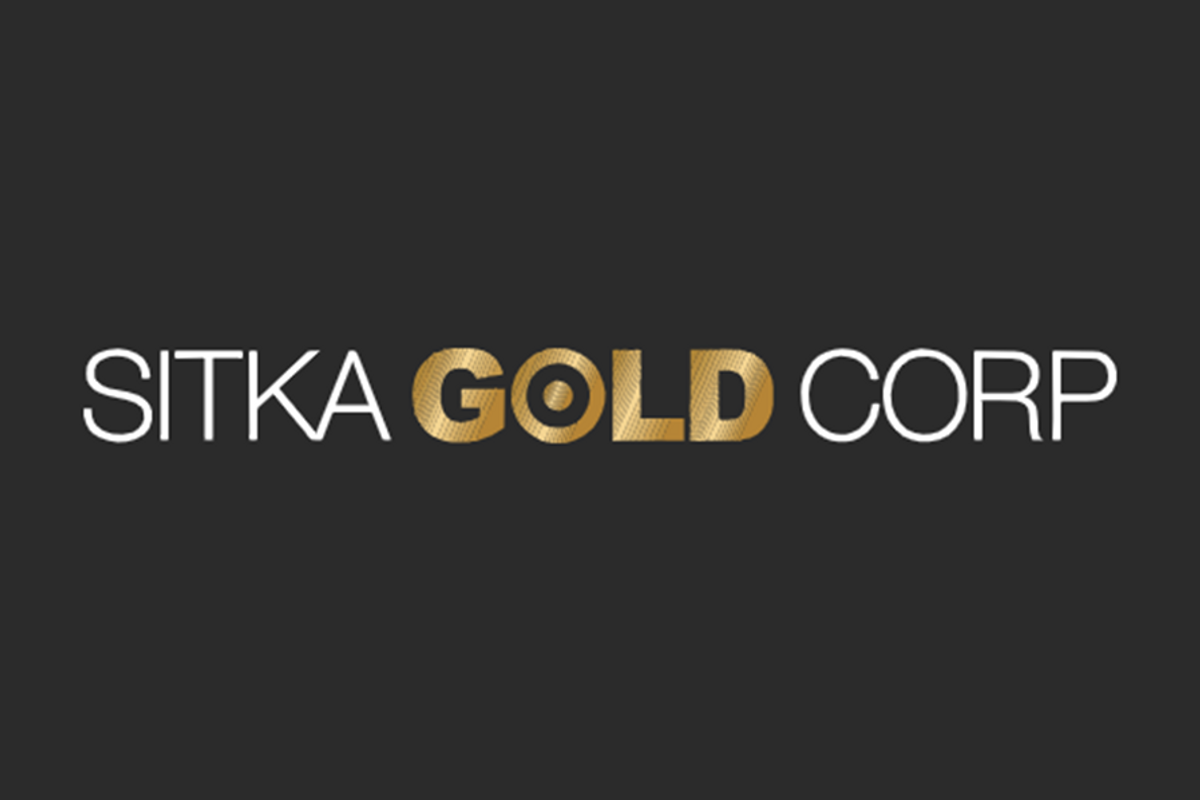











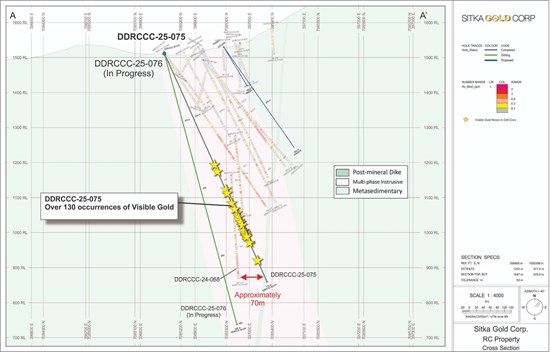



 Figure 1. Lake Owen, Location Map, Wyoming, USA
Figure 1. Lake Owen, Location Map, Wyoming, USA  Figure 2. Lake Own Project, Troy's Claims on Topo Map
Figure 2. Lake Own Project, Troy's Claims on Topo Map Figure 3. Drill Hole Locations on top of Geology and Company's Claims
Figure 3. Drill Hole Locations on top of Geology and Company's Claims 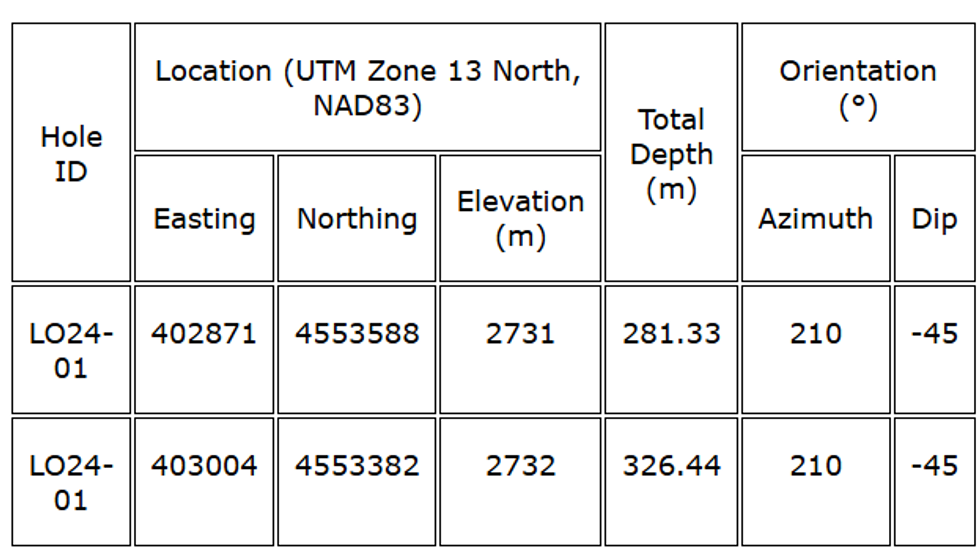 Table 1: Drill hole specifications
Table 1: Drill hole specifications 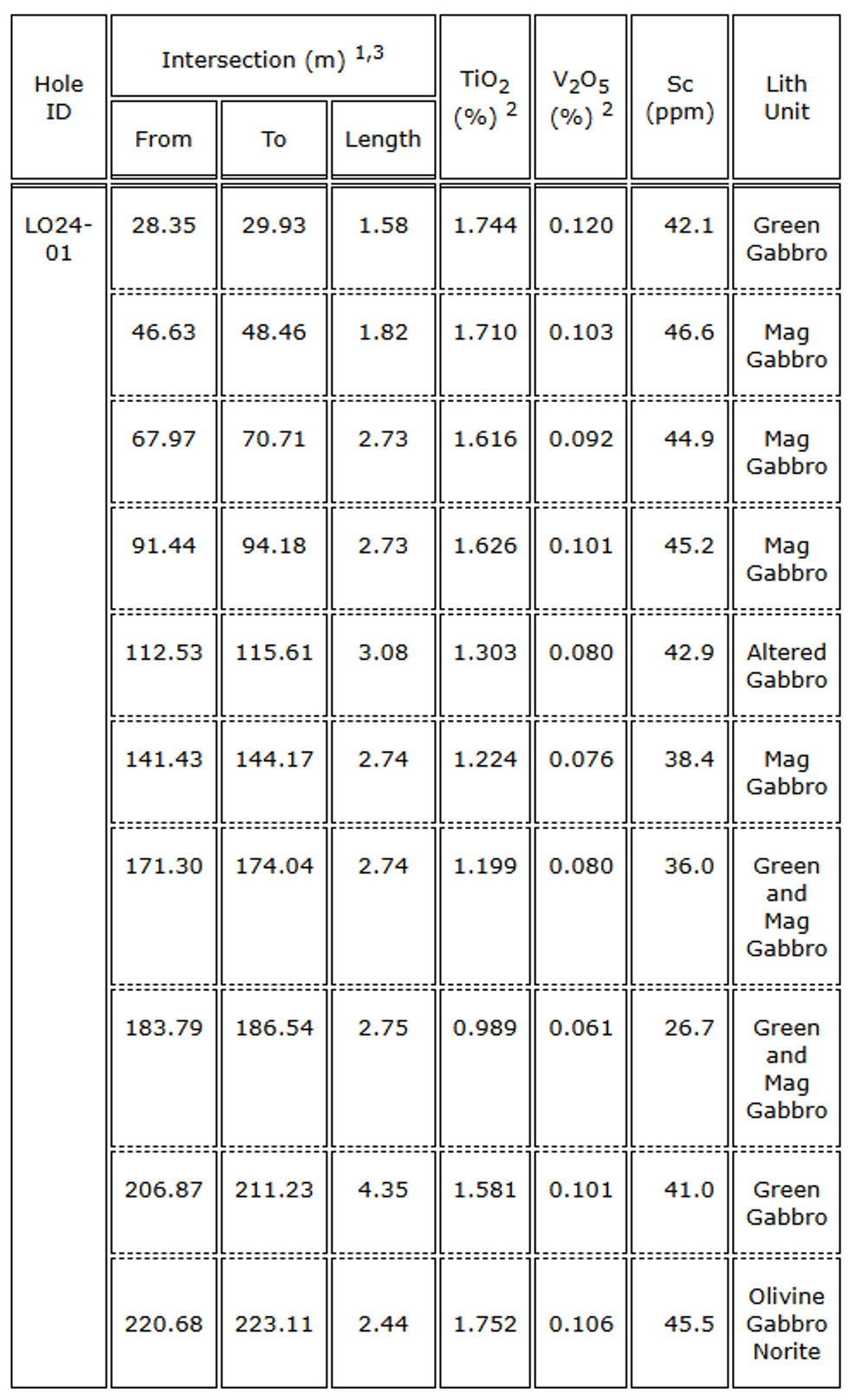 Table 2. Drill hole LO24-01 intersections
Table 2. Drill hole LO24-01 intersections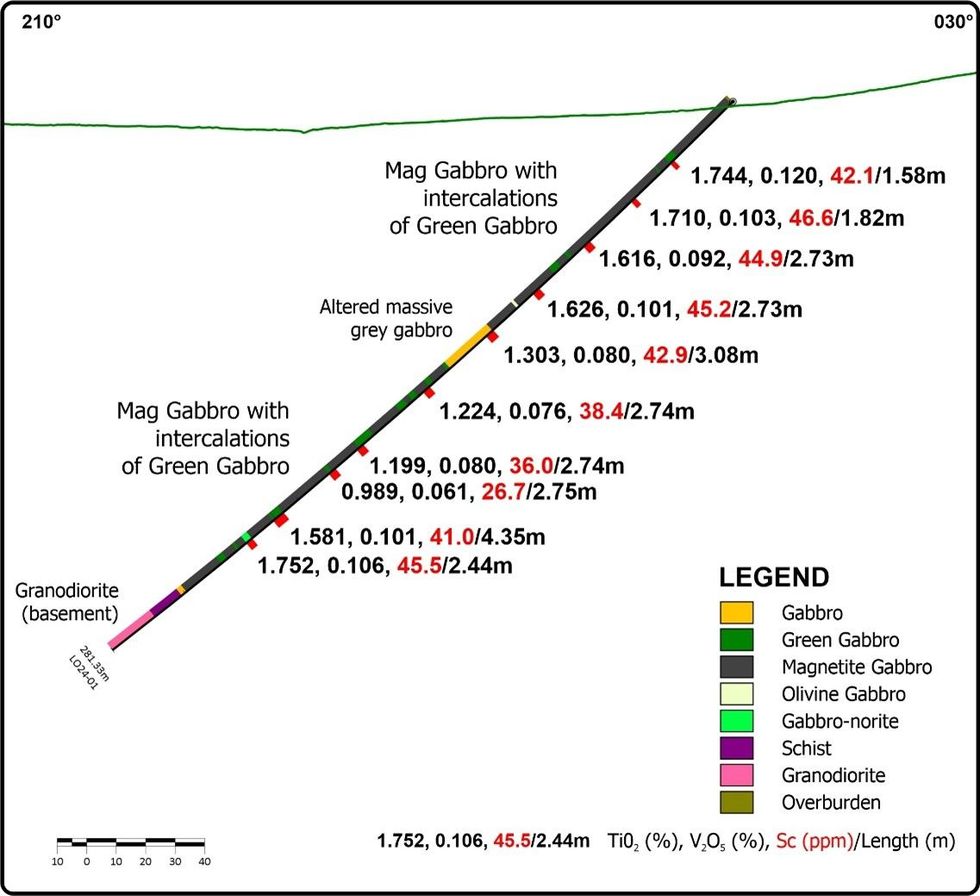 Figure 4. DDH Cross Section, LO24-01
Figure 4. DDH Cross Section, LO24-01  Figure 5. Rock Geochemistry, Titanium
Figure 5. Rock Geochemistry, Titanium  Figure 6. Rock Geochemistry, Scandium on top of Airborne Magnetics (1st Vertical Derivative)
Figure 6. Rock Geochemistry, Scandium on top of Airborne Magnetics (1st Vertical Derivative)






